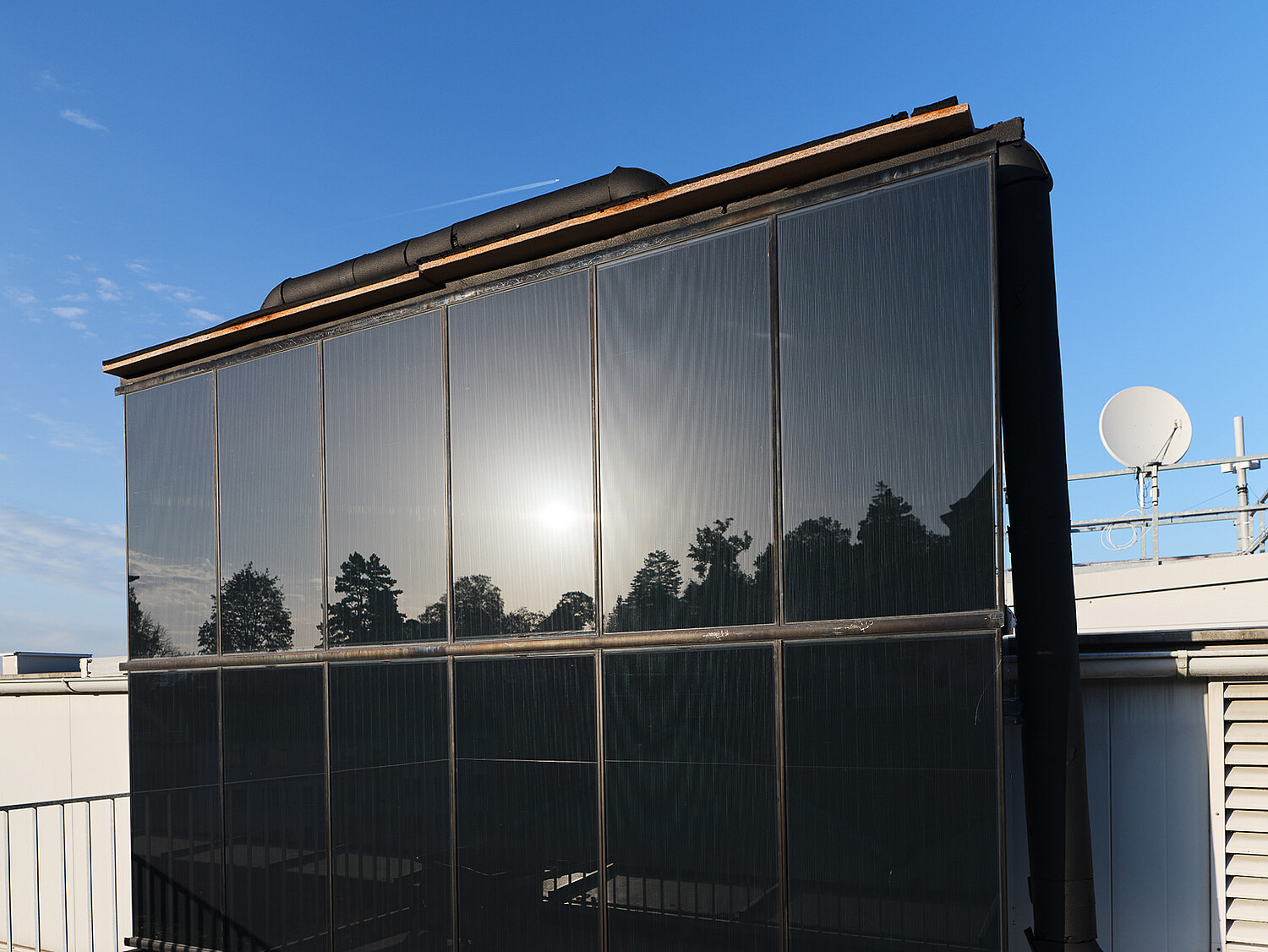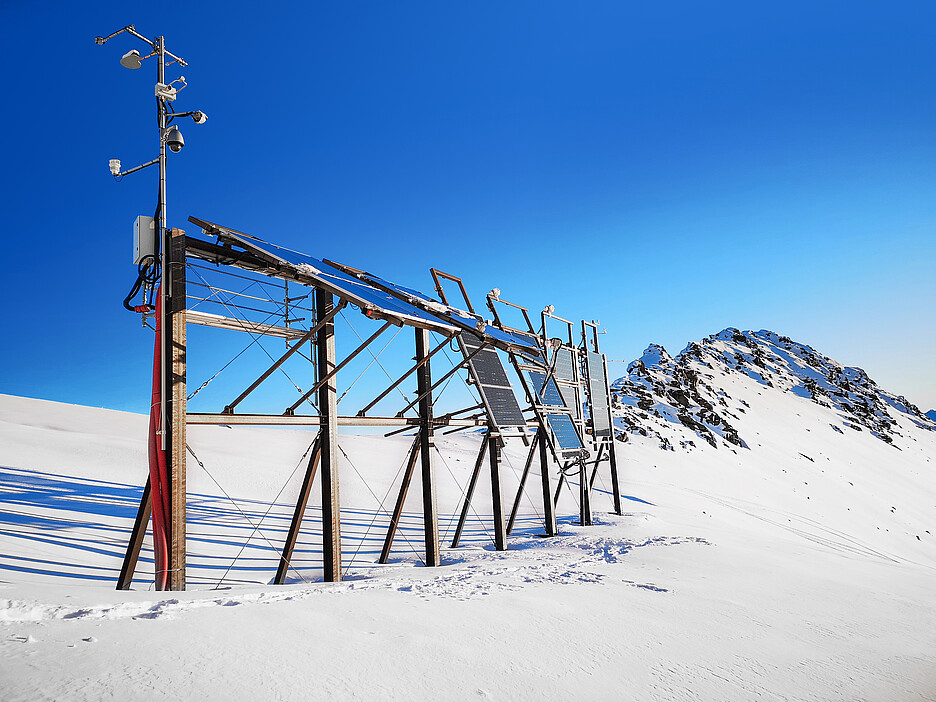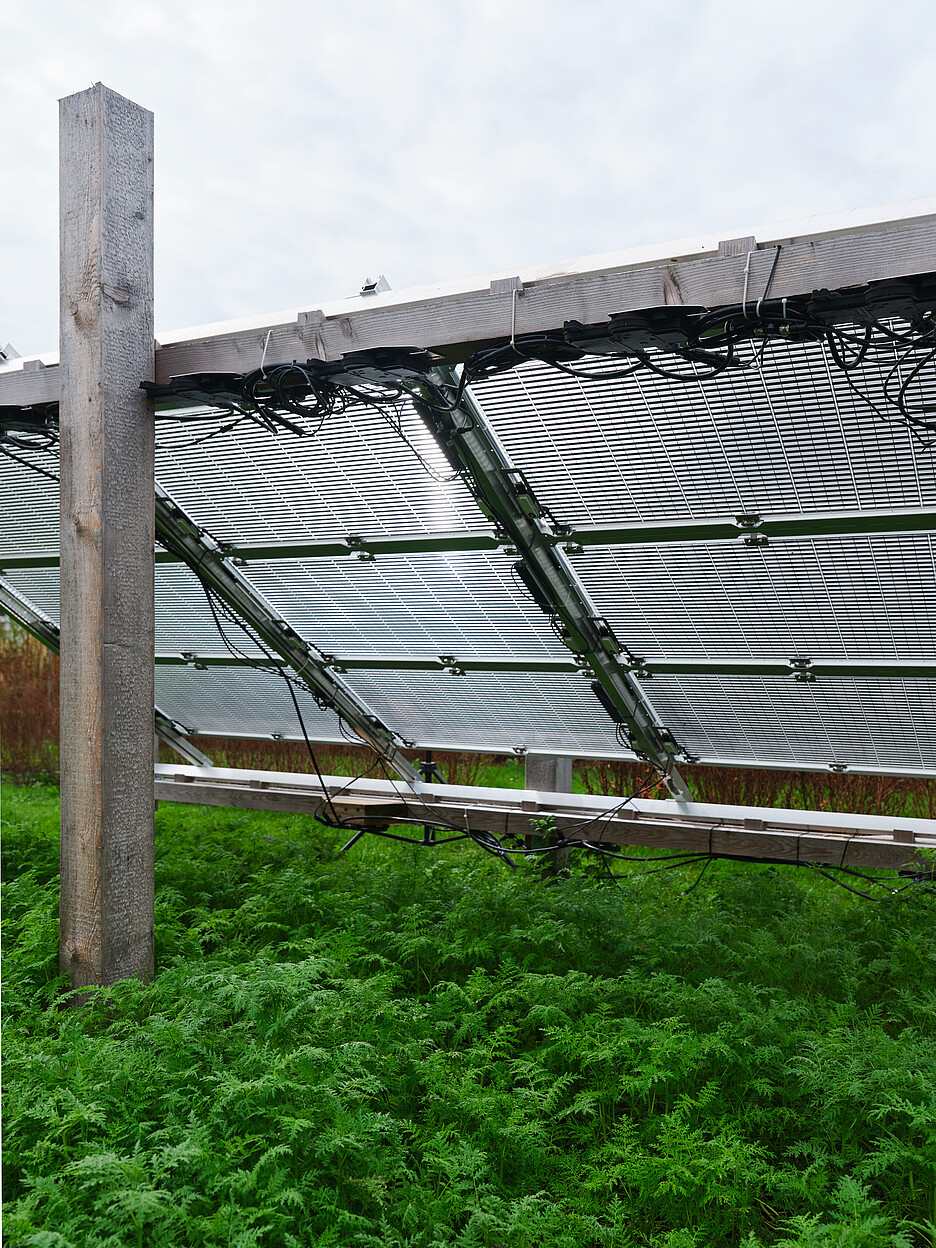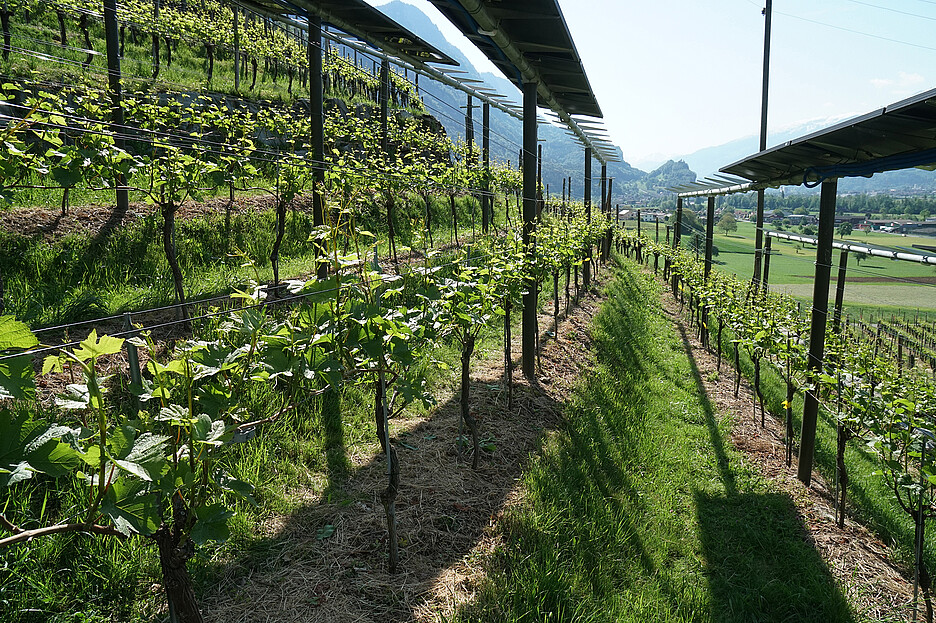
Despite landscape protection and preservation orders: the great potential of the sun
While expectations for solar energy are rising, the sense of nervousness is also on the increase. Politicians now want to launch a solar expansion offensive. This calls for a critical evaluation. ZHAW researchers show where the solutions lie.
In 2030, the contribution made by photovoltaics to Switzerland’s power supply will only be in the “low single-digit percentage range.” This was the view shared in this magazine (ZHAW Impact, March 2012) some ten years ago by Rudolf Hug, the then Chairman of the economiesuisse “Energy and Environment” commission, during a discussion with Professor Franz Baumgartner, a photovoltaics expert at the ZHAW School of Engineering. It doesn’t look as though this will be the case. Today, some eight years before the start of the next decade, Hug’s forecast is already proving to be wide of the mark. Solar energy currently already accounts for a 6.5 percent share of power generation and developments in this area are continuing to advance at a brisk pace. Week after week, tens of thousands of new modules are being installed.
Just over 40 percent of the power demand
However, this is still not enough solar power. According to the federal government’s Energy Perspectives 2050+, photovoltaics should supply around 34 terawatt hours (TWh) in Switzerland in 2050. This is around twelve times more than the levels generated today and will correspond to just over 40 percent of the power demand. This is the only way to reconcile everything: achieving the net zero target, reducing our dependence on oil, gas and dubious regimes, compensating for the loss of nuclear energy and covering the power consumption of electric cars and heat pumps. Increased efforts are needed to this end. “On average, plants with a total capacity of 1.5 terawatts need to be added every year. Last year, the figure was half that,” explains Baumgartner, the Programme Director for Energy and Environmental Engineering Studies.
“During the winter months alone, the bifacial modules in the mountains generate a yield similar to that achieved in Wädenswil over the entire year.”
How can this succeed? And where will we find space for all the solar modules? After all, the area required equates to a space roughly the size of the canton of Appenzell Innerrhoden. In view of the looming power shortfall this winter, solar plants in the mountains that work with double-sided modules represent a good option. The key feature of these modules is that their reverse side uses the light reflected from the snow. When installed upright, such panels produce more power in winter than in summer. They benefit from the greater solar radiation in the Alps, as demonstrated by a ZHAW test facility situated at 2,500 metres above sea level near Davos. “During the winter months alone, the bifacial modules in the mountains generate a yield similar to that achieved in Wädenswil over the entire year,” says Jürg Rohrer, Head of the Renewable Energies Research Group at the Wädenswil campus.
Photovoltaic systems in ski resorts

Professor Reto Rupf shares his view that intact landscapes do not have to be damaged as a trade-off for Alpine solar plants. The specialist in environmental planning heads the Geoecology Research Unit at the Wädenswil campus. He argues against establishing such plants in all landscapes and instead advocates focussing on a few locations where there is already a great deal of infrastructure. Examples include dams and ski resorts, where a solar plant will cause less additional damage.
“According to a representative survey conducted in Switzerland, people are not averse per se to a solar plant being built in a ski resort,” says Rupf. Until now, he adds, it has not been permitted to install such plants next to ski slopes. With the “urgent measures for the short-term provision of a secure power supply in winter” passed by Parliament, however, this is now changing. Rupf points out that in more sensitive areas it is possible to implement these projects in a way that has less of an impact thanks to light construction methods involving rope constructions. In order to obtain a building permit for an Alpine solar plant, an environmental impact assessment is required for construction projects over a certain size. This assesses the project’s impact on the surrounding environment both during the construction and operation phases as well as during the subsequent restoration of the landscape once operations cease. The latter is an often neglected point, says Reto Rupf.
Preservation orders and photovoltaics

With an eye to accelerating the expansion of solar energy, there are some voices in political circles that want to curtail the measures aimed at protecting landscapes, nature and building culture. For example, the responsible Committee of the Council of States would also like to allow expansion in protected areas under the “Federal Act on a Secure Electricity Supply from Renewable Energy Sources”. This impacts areas such as the Federal Inventory of Landscapes and Natural Monuments of National Importance (ILNM), national biotopes and the Swiss heritage sites of national significance. In the National Council, a motion has been tabled that calls for the right of appeal of environmental organisations, such as Pro Natura and the Swiss Heritage Society, with respect to solar and hydroelectric power plants to be abolished.
“Those who claim that preservation orders stand in the way of the energy transition are arguing unobjectively.”
“Those who claim that preservation orders stand in the way of the energy transition are arguing unobjectively,” says Stefan Kurath, Co-Head of the Institute of Urban Landscape. The professor at the School of Architecture, Design and Civil Engineering considers the expansion of photovoltaics to be absolutely necessary and points to the flat roofs of commercial properties and large residential buildings as being sources of enormous untapped potential. While he adds that the area offered by the roofs of listed buildings and Swiss heritage sites is inconsequential and too small for the operation of efficient plants, Kurath also opines that it would be absolutely possible to integrate solar power plants there by applying architectural principles. He sees the problem rather in the uncontrolled growth of vegetation and the difficulty of tinkering with the plants on roofs and facades. The same applies to both solar plants and large wind farms in cultural landscapes: “We need to take care of our environment without destroying its cultural value.” It would thus not be the protection of cultural heritage, historical monuments, sites of local character and the landscape that would prevent the energy transition, but rather unqualified approaches. This is where architects come in.
“Motorways, sewage works and car parks are suitable for larger photovoltaic systems. Pension funds can also participate in these schemes.”
The study “Photovoltaics: the potential offered by roof surfaces in Switzerland” (in German) reveals just how much space is available on the country’s approximately 2.8 million buildings. In this study, Jürg Rohrer and his team analyse all pitched and flat roofs and identify those with a good-to-excellent level of solar radiation that would be suitable for solar power plants. The resulting area is one-and-a-half times the size of the canton of Appenzell Innerrhoden. This would make it possible to produce almost 54 TWh of power per year, considerably more than the required 34 TWh.
Franz Baumgartner also considers inactive infrastructure areas to be promising. The solar sail developer is thinking of somewhat larger systems that are stretched out over motorways, sewage works or car parks: “Pension funds could also participate in this.” His primary focus is on implementation: He believes that the extent to which Alpine power makes sense not only depends on the potential, but ultimately also on the costs involved. As long as there are no meaningful cost figures available for large-scale projects in the Alps, a certain level of scepticism is called for, says Baumgartner, who at this time would turn his attention to the infrastructure areas found on the Central Plateau.
Avoid expensive electronic gadgetry
In terms of costs, he also believes that there is a need for the improvement of conventional systems on single-family homes, with optimisations being required with respect to the planning of the systems and the selection of the electronic components used. While expensive electronic gadgetry behind each solar module would make it possible to generate a few extra kilowatt hours in a few cases, Baumgartner believes that potentially higher repair costs would be incurred further down the line at the expense of the end customer. Overall, he is convinced that the set goals are achievable: “Photovoltaics can undoubtedly succeed if we are able to train the necessary specialists.” The growth rates seen in recent years need to be increased significantly, “only then can we move forward quickly.”
Agri Photovoltaics offers great potential

The placement of photovoltaic systems on agricultural land has been possible since the middle of the year. The prerequisite here is that the crops grown on this land yield more as a result, a requirement specified by the Spatial Planning Ordinance. There are special solar panels that can be adjusted from a 15 to 70 percent level of translucency, depending on the needs of the plants. The most obvious area of use is for the cultivation of vegetable crops. These are often protected from the cold using foil, a role that in the future could be taken on by the modules. And many orchards are covered with hail nets.
Or are meadows and fields more suitable? This is revealed by the 120-page “Agri-photovoltaics feasibility study” (in German), which was headed by Mareike Jäger from the Horticulture Research Group at the Wädenswil campus. The study’s starting point was formed by agricultural areas situated close to settlements with sufficient solar radiation. Jäger then discarded protected areas and biodiversity areas, before finally also ruling out areas located a greater distance from power lines (connection costs). The latter consideration often affected fruit and vegetable crops, whereas many arable fields proved to be “best suited” thanks to their proximity to the power grid. Meadowland lay somewhere in between. The bottom line is that the potential here remains surprisingly large: “Just 1.1% of agricultural land could supply a tenth of Switzerland’s power needs in 2050,” says Jäger.
However, is an increase in crop yields realistic? A test facility in Wädenswil is trying to get to the bottom of this. Two small tests have provided initial hints. Lamb’s lettuce thrived better under solar modules than in open fields thanks to the protection from frost and heat. And at a vineyard on Lake Walen, the harvest yield in autumn 2021 was greater from those vines grown under modules.

0 Comments
Be the First to Comment!